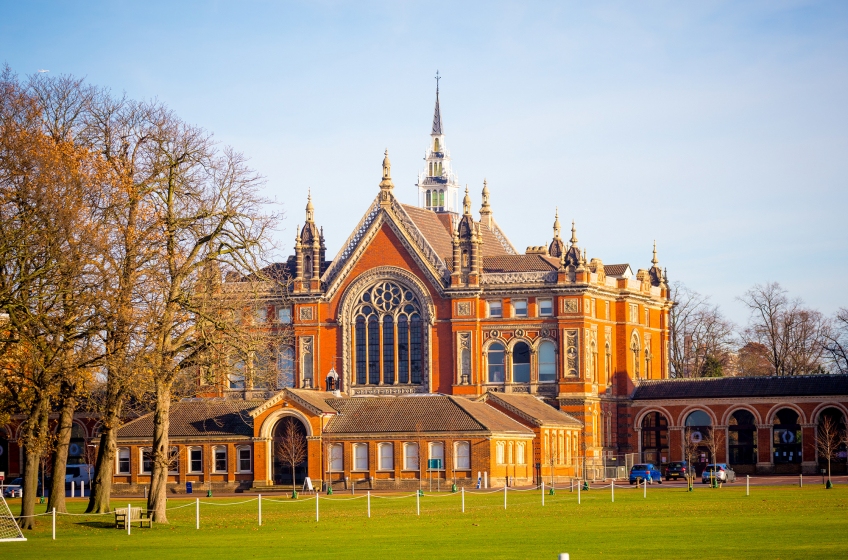Discover Dulwich | A Visitor's Introduction to Dulwich
Dulwich is a delightful London suburb that combines rich history, picturesque landscapes, and a relaxed village atmosphere.
Recommended Dulwich Accommodation: Hotels Bed & Breakfasts
Why is Dulwich Worth a Visit?
Dulwich is worth a visit for its unique blend of historic charm and contemporary living. It’s a place where the past meets the present, offering visitors a chance to explore historic architecture, sprawling green spaces, and a thriving local arts scene. Its relaxed pace of life makes it an ideal retreat from the hustle and bustle of London’s centre, yet it’s easily accessible via public transport. Whether you’re an art enthusiast, a nature lover, or someone seeking a leisurely day out, Dulwich has something to offer.
Dulwich Highlights: Things to See and Do in Dulwich
1. Dulwich Picture Gallery: Founded in 1811, the Dulwich Picture Gallery is one of the oldest public art galleries in England. The gallery is renowned for its impressive collection of European masterpieces by artists such as Rembrandt, Gainsborough, and Rubens. Its beautiful building, designed by Sir John Soane, is a work of art in itself. The gallery regularly hosts exhibitions, workshops, and community events, making it a cultural hub in the area.
2. Dulwich Park: Spanning 72 acres, Dulwich Park is an oasis of greenery perfect for a peaceful stroll, a leisurely bike ride, or a family picnic. The park features a boating lake, well-maintained gardens, and a café serving delicious treats. For sports enthusiasts, there are tennis courts, a bowling green, and a children’s playground. During the summer months, the park comes alive with open-air theatre performances and local events.
3. Dulwich Village: Dulwich Village is the epitome of charm and tranquility. With its Georgian houses, boutique shops, and cosy cafes, the village feels like a world away from the urban stresses of London. Stroll along its tree-lined streets and pop into local favourites like Gail’s Bakery or the Dulwich Village Bookshop. The village’s atmosphere makes it an ideal spot for a relaxing afternoon.
4. Dulwich College: Established in 1619 by Edward Alleyn, Dulwich College is one of London’s most prestigious independent schools. The college’s stunning red-brick Victorian buildings are set in beautiful grounds that are occasionally open to the public. The school also has a fascinating history, which can be explored further at the Dulwich College Archive.
5. Horniman Museum and Gardens: Although technically located in nearby Forest Hill, the Horniman Museum and Gardens is just a short walk from Dulwich and is definitely worth a visit. This eclectic museum houses an impressive collection of natural history, anthropology, and musical instruments. The surrounding gardens, with their stunning views over London, are perfect for a stroll or a picnic.
6. Belair Park: Belair Park is another gem in Dulwich, known for its beautiful Georgian mansion, Belair House, which now operates as a restaurant and event space. The park itself is a lovely spot for a walk or a jog, with its ornamental lake, wooded areas, and sports facilities.
7. Dulwich and Sydenham Hill Woods: For a more adventurous escape, Dulwich and Sydenham Hill Woods offer a fascinating glimpse into London’s natural landscape. The woods are a local nature reserve with winding trails that take you through ancient woodland, offering sightings of wildlife and remnants of Victorian gardens. The iconic folly, known as the ‘Dulwich Wood Railway Bridge’, is a highlight for those interested in local history.
8. North Cross Road Market: If you’re in Dulwich on a Saturday, head to North Cross Road Market in nearby East Dulwich. This lively market is known for its artisanal food stalls, vintage finds, and handcrafted goods. It’s a great place to sample local delicacies, pick up souvenirs, and soak in the vibrant community atmosphere.
Practical Advice for Visitors
Getting There: Dulwich is well-connected to central London by train and bus. The nearest stations are North Dulwich, West Dulwich, and East Dulwich, all of which are served by trains from London Bridge or Victoria. Alternatively, buses 37, 40, and P4 provide convenient routes through the area.
Getting Around: Dulwich is compact and easily explored on foot or by bicycle. Dulwich Park has a bike hire service, and cycling is a pleasant way to navigate the area’s parks and residential streets. If you prefer public transport, buses connect Dulwich to surrounding areas like Peckham, Brixton, and Crystal Palace.
Best Time to Visit: Dulwich is delightful year-round, but spring and summer are the best times to appreciate its parks and gardens. Many local events, such as open-air concerts and markets, take place during these warmer months.
Dining and Shopping: Dulwich offers a mix of dining options, from traditional pubs like The Crown and Greyhound in Dulwich Village to trendy eateries like The Palmerston in East Dulwich. For a casual lunch or coffee, head to Romeo Jones or the Dulwich Pantry. Don’t miss the independent shops in Dulwich Village and Lordship Lane, where you’ll find everything from handmade gifts to gourmet treats.
Local Events and Festivals: Keep an eye out for the Dulwich Festival, held each May, which showcases local art, music, and culture. The Dulwich Picture Gallery also hosts seasonal events and workshops suitable for all ages.
Accessibility: Most of Dulwich’s attractions are accessible, but some areas of Dulwich and Sydenham Hill Woods may have uneven paths. Dulwich Park and the Dulwich Picture Gallery both have facilities for visitors with limited mobility.
Nearby Attractions: If you’re looking to explore further afield, consider visiting the nearby neighbourhoods of Herne Hill and Peckham. Brockwell Park in Herne Hill has an outdoor lido, while Peckham is known for its vibrant nightlife and rooftop bars.
Shortlist
- Your Shortlist is empty

